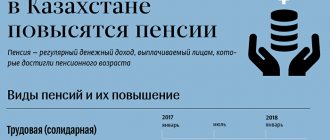Continuous work experience is the time during which a person worked constantly, and the periods between his dismissals and new employment did not exceed the periods established by law.
The concept of “continuous work experience” is remembered by many specialists who have been working since Soviet times. However, in Russia this concept has not existed legally for more than 10 years. At the same time, we often hear personnel officers and officials mention him. So what length of service is considered continuous these days and what does it affect?
What is continuous work experience?
Continuous work experience can be interrupted without legal consequences, but only if the reason was valid, for example, the birth of a child, etc. This feature of the concept seemed quite logical in the system of Soviet labor legislation. This is how this term was interpreted in labor legislation until 2006. In particular, continuity of experience was maintained if the citizen found a new job within 1 to 3 months, depending on certain conditions. In some situations, continuous work experience after voluntary dismissal was “frozen” for an indefinite period, for example, if a married couple moved to another area due to the transfer of one of the spouses, and the second could not quickly find a job. This was a very important indicator that influenced sick pay and the amount of pensions. This issue was regulated by Resolution of the Council of Ministers of the USSR dated April 13, 1973 No. 252.
In 2006, the Constitutional Court of the Russian Federation, by Resolution No. 16-O dated March 2, 2006, canceled this document, since the concept itself was recognized as inconsistent with the Constitution of the Russian Federation. The Constitutional Court can also formulate labor legislation if we follow the logic of the norms of the Constitution of the Russian Federation. The Constitutional Court considered that the use of the term “continuous work experience” violates the right of citizens to free work. Since then, no new interpretations of continuous work experience have been adopted. However, today there are several industries where it is still taken into account. But, unlike the term “work experience,” the indicator under discussion is not used so widely. Here are some examples:
- The length of work experience without interruptions is important in some cases when assigning temporary disability benefits, but now this does not always happen.
- In addition, such length of service is taken into account when assigning bonuses and benefits in certain professional fields.
- Sometimes employers in collective agreements provide for certain payments or bonuses for long-term work in one place.
- When applying for employment, continuity of work experience can be taken into account: the point here is this: the employer automatically pays attention to how long the employee worked at each specific enterprise and how many jobs he changed. This point has nothing to do with legislation and is not regulated anywhere.
Motherhood
Continuous work experience is maintained if a woman goes on maternity leave. But is continuity maintained if the expectant mother goes on maternity leave? There are two completely opposite opinions on this matter.
Russian labor legislation does not contain information regarding maternity leave and continuous service. In essence, the length of service is maintained, since the woman remains employed, the nature of the work performed changes. On maternity leave, a woman deals only with family matters, but not with work duties. However, lawyers tend to believe that the length of service in this situation is not interrupted.
Continuous work experience: how it is taken into account
Now, what length of service is considered continuous is determined differently. According to the norms of the Labor Code of the Russian Federation, this is the period during which the employee worked at the same enterprise. Although none of the articles of the Labor Code of the Russian Federation directly indicates this, this is clear from the meaning, for example, Article 121 of the Labor Code of the Russian Federation. At the same time, this indicator no longer affects the amount of sick leave or the amount of pension. The only thing it gives is allowances and benefits in certain areas. For example, when working as a teacher or doctor. Medical workers are entitled to receive an allowance for many years of work in the healthcare sector. In addition, in the Far North and in similar areas, wage supplements are given to those individuals who continuously work in such climatic conditions. Such regions, in accordance with Order of the Ministry of Labor of the RSFSR dated November 22, 1990 No. 3, include:
- Arhangelsk region;
- Irkutsk region;
- Chita region;
- Republic of Karelia;
- Komi Republic;
- The Republic of Buryatia;
- Tyva Republic;
- southern regions of the Far East and Krasnoyarsk Territory.
When is employment interrupted after dismissal?
Continuous work experience after dismissal is maintained only if the established deadlines are met. They differ depending on the reason for the termination of the relationship, working conditions and other aspects.
Dismissal of one's own free will without specifying the reason for such a decision allows the employee to search for a new job for no more than three weeks. But if within one year he terminates the contract for the second time on his own initiative, then this benefit will be withdrawn from him. If the employer decides to dismiss an employee or a transfer is made from one organization to another, then a difference of one month is allowed.
3 months are given to the following categories:
- Dismissed due to layoffs or company reorganization.
- Those who have lost their jobs due to temporary disability.
- Those left without a job due to the disability group they received.
- Those who left their position due to health conditions or due to inadequacy.
- Primary school teachers who were laid off due to declining student numbers.
- For combatants and former military personnel.
The presence of breaks in work, in general, does not affect other indicators of the employee’s further social security. Although, for example, the same unemployment benefit will be greatly reduced if a person has not worked for a long time and goes on sick leave in the first months of work. In this case, the insurance period will be considered, but the income for the last two years of work will be minimal.
Such cases are relatively rare, but do occur in practice. Is continuous service maintained in this case? The Labor Code states that upon dismissal due to any specific violation, continuity of service is lost. A completely logical solution for employers in situations where employees of organizations violate labor regulations is dismissal. In this case, workers can only adjust their actions in a timely manner in order to avoid termination of the employment relationship under the article.
- improper performance of duties;
- absence without sufficient reason, absence from work for more than 3 hours, appearing in a state of intoxication;
- the entry into force of a court verdict excluding the continuation of work;
- loss of trust in the financially responsible person;
- committing an immoral act by an employee engaged in education;
- at the request of the trade union.
It is interrupted upon voluntary dismissal again within a year from the date of the previous dismissal.
When can seniority be interrupted upon dismissal?
The length of service is interrupted regardless of the duration of the break in activity upon dismissal for the following reasons:
- for systematic evasion of the performance of official duties established by a contract or job description, or other internal regulatory documents of the enterprise;
- for absenteeism (that is, absence from work for 4 hours or more);
- for appearing in the organization in a state of alcoholic (or other) intoxication;
- in connection with the conviction of an employee, when the punishment, in accordance with the sentence, excludes the continuation of activities in the organization (not only imprisonment, but also correctional labor);
- in connection with a conviction for committing theft at an enterprise;
- for the commission by an employee performing educational functions of an immoral act or regarded as such that it makes continuation of the activity impossible;
- in connection with the imposition of a disciplinary sanction by management;
- in connection with the establishment of other guilty behavior of the employee, for which dismissal is provided as a sanction.
What is the length of service?
All concepts of length of service available in various laws and normative documents issued on their basis can be simply divided into 4 main categories.
| Category | Definition |
| Total work experience | The entire actual (including breaks) period when the citizen performed socially significant useful actions that are fixed at the legislative level. This is the performance of any paid or creative work, service in government agencies, individual entrepreneurial detail, and other periods determined by law that are considered part of the length of service. |
| Special experience | This includes periods of time (including breaks) when a citizen performed socially significant labor functions in certain positions, under special (different from normal) conditions of activity, or had a special status. Examples are service in the armed forces, work of disabled people of groups 1 and 2, work of prisoners beyond the period prescribed by the sentence. |
| Continuous experience | They include all periods of time when an employee, without breaks (or their duration should not exceed the period established by law in each specific case), performed labor functions in one company (in different positions) or in several enterprises. |
| Insurance experience | The time interval when insurance contributions are paid for an employee directly to the Pension Fund in order to create the proper level of pension coverage for him in the future. The concept was introduced in 2007 and is just beginning to take root. |
It is worthwhile to dwell on the procedure for calculating length of service for various periods of performance of work functions. For certain working conditions, work experience can be calculated using increasing factors. The increased coefficient will be used to calculate:
- one and a half times the rate if the citizen worked in the Far North or equivalent areas;
- double the amount when performing military service (conscription), labor activity in anti-plague institutions, leper colonies;
- in triple the amount when military service is carried out during hostilities, illegal stay in places of deprivation of liberty, illegally repressed citizens, and over time, rehabilitated.
https://youtu.be/KF6GMv2AoQo
When will the experience continue?
If you are wondering how much continuous work experience you have, how to calculate and take into account its duration, everything is simple: it is determined in days, calendar months and years. In particular, this is all the time recorded in the work book during which the employee had an employment contract. If an employee changes jobs, continuity is lost. The exception is when a person continues to work in the same structure and field, as in the case of teachers and doctors. If they remain in budgetary institutions and work in their specialty, questions about whether they have continuous work experience or how many days there was a break between employment usually do not arise in order to assign an allowance.
In addition, it should be taken into account that, by virtue of the Law of the Russian Federation of April 19, 1991 No. 1032-1, the following periods do not affect continuity:
- a period of official unemployment with the receipt of benefits in connection with this;
- the period of study in secondary and higher educational institutions for which a scholarship is paid;
- participation in public works on a paid basis,
- moving to another area in the direction of the employment center for employment;
- officially established temporary disability;
- maternity leave;
- being in compulsory military service or military training;
- participation in activities related to preparation for military service or alternative civilian service;
- performance of state duties (for example, election as a deputy to legislative bodies).
Experience: definition
Work experience is the period of time during which a citizen works or carries out various types of activities. This concept applies to cases of official employment or business activities. This indicator is directly related to the calculation of pensions, is required to receive various compensations and guarantees provided by the Government, and is calculated in the manner established by law. The work book is a document confirming the existence of work experience.
Work experience is divided into several types:
- General, including all years of work of a citizen.
- Special, intended for persons occupying certain positions.
- Continuous.
How to calculate length of service using a work book
You can calculate your continuous work experience using an online calculator. In this case, it is enough to enter the data in the appropriate fields, and the calculation will be performed automatically.
When making calculations using a regular calculator, you first need to calculate the working time at each enterprise and add up the periods if the break was of a legal duration or occurred for a good reason.
An example of calculating the continuous work experience of a specific employee.
| Company | Start of activity, date of employment | Contract termination date and reason | Continuous work experience |
| LLC "Klyuch" | 02.04.2015 | 07/01/2015, liquidation of the organization | 3 months |
| LLC "Kadr" | 05.09.2015 | 01/26/2017, at your own request | 1 year 7 months |
| LLC "Snast" | 11.02.2017 | 13.12.2019 | 2 years 5 months |
For whom and when is it important?
The requirement of continuous work experience continues to have a serious impact on a number of professions and specific categories of citizens. First of all, the following categories of employees should include:
- who work in the field of medicine;
- workers as rescuers;
- workers in the educational sector;
- working in government agencies. Continuity of work experience helps representatives of various professions receive:
- add. days for main vacation;
- increases to the total salary.
After the introduction of special amendments that were applied to the pension legislation of Russia, in those situations where the total length of insurance service is less than the continuous working experience, when determining the amount of the pension, it is the length of continuous or length of service that is taken as the basis.
https://youtu.be/FDMuYx_2Erg
What is the impact of working in one organization?
Currently, continuous work experience is used only in certain areas to assign salary bonuses. In addition, when answering the question: what does continuous work experience affect? You can remember the norms of Article 17 of Federal Law No. 255-FZ of December 29, 2006. It provides for the use of length of service when determining the amount of temporary disability benefits due to an employee. Although usually, to calculate these benefits, the insurance period is taken into account as a general rule.
However, it happens that the duration of the insurance period for the period before 01/01/2007 will be less than the duration of the continuous work experience. In this case, it is possible to assign benefits in accordance with previously valid regulatory legal acts for the same period, i.e., take as the calculated value the time during which the employee worked without breaks or with breaks that do not violate the flow of the established period.
Importance for pension calculation
Until 2006, length of service directly affected the maximum size of a future pension. The amount was calculated based on the “principle of solidarity.” Continuity meant additional premiums.
Pension reform started in 2002. The amount of time worked and the amount of wage payments today are important for citizens born before 1963 and who stopped working before 2002. In other cases, accruals are made on the principle of accumulation, continuity is not taken into account.
https://youtu.be/ebyvZ8ONdxw
Work experience is collected from the time actually worked, and it is important to be officially employed and have an entry in the appropriate book. Continuity is excluded if there is a certain frequency and timing of enrollment in a new position. This length of service today is important when calculating some bonuses, sick pay and social benefits. For pensions, the general period during which organizations contribute funds to the Pension Fund is important. This concept is no longer used in the Labor Code of the Russian Federation. Mentioned only in certain legal acts.
Pensions and benefits
Currently, the employee’s length of service without interruptions does not affect the amount of the pension, as well as the right to early retirement. Therefore, in connection with the assignment of a pension, the question: how to calculate continuous work experience is not worth it. An important role here is played by the period during which a person was registered in the pension insurance system, and the employer paid insurance contributions to the Pension Fund for him (the so-called insurance period). There is currently no increased pension for working in one place for a long time. The main thing is that all payments in favor of the employee are official, and that the employer makes timely and full insurance contributions from them. If a person works in one place for a long time, but receives a dull salary, the deductions to his personal account in the Pension Fund of the Russian Federation are scanty. Therefore, such a future pensioner cannot count on a decent pension.
Health
If a citizen cannot perform certain types of work due to health reasons, is continuous work experience maintained? The Labor Code of the Russian Federation contains an article in this regard, which takes into account the special state of health of the citizen. If an employee suffers from serious illnesses that simply do not allow him to perform certain types of activities, he can count on maintaining continuous service. How?
When leaving your previous job, you are given a period of three months to find a new employer. Also during this period, the citizen has every right to return to his previous employer. At the same time, the experience is preserved. However, in practice, such cases are extremely rare, since returning to previous work duties will take the employee even more time (due to health reasons). In most cases, workers refuse further employment altogether.
We invite you to familiarize yourself with the steps to prepare a case for legal proceedings in the arbitration process
How to calculate continuous experience in 1C?
The duration of uninterrupted work can be calculated using the 1C program “Salaries and Personnel” or independently.
To calculate using the program, data on hiring, dismissal and new employment are entered into the required columns. Then click the “calculate” button.
You can make the calculation yourself.
https://youtu.be/https://www.youtube.com/watch?v=AqlG74fTjUo
The calculation principle is as follows:
- In order to make calculations using the calculator, the dates of employment are subtracted from the date of each dismissal. If the interval between dismissal and new employment is no more than 3 weeks, the results obtained should be summarized. Breaks exceeding 3 weeks are not taken into account.
- If a citizen was fired 2 or more times within one year , then this year does not apply to uninterrupted service.
- who was forced to leave his previous workplace for serious reasons has the right to increase the break to 1 month
- For citizens who worked in the Far North or similar territories, the break is 2 months after dismissal, and that period remains continuous.
- The duration of the break in work for those who are dismissed due to liquidation or reorganization of the enterprise is 3 months. The same applies to people who quit due to health reasons or disability. This length of service will also be considered uninterrupted.
- Continuous activity will be considered for women who were forced to interrupt work due to the need to care for a child with a disability who has not reached the age of 16 years, or for those mothers whose children have not reached the age of 14 years.











